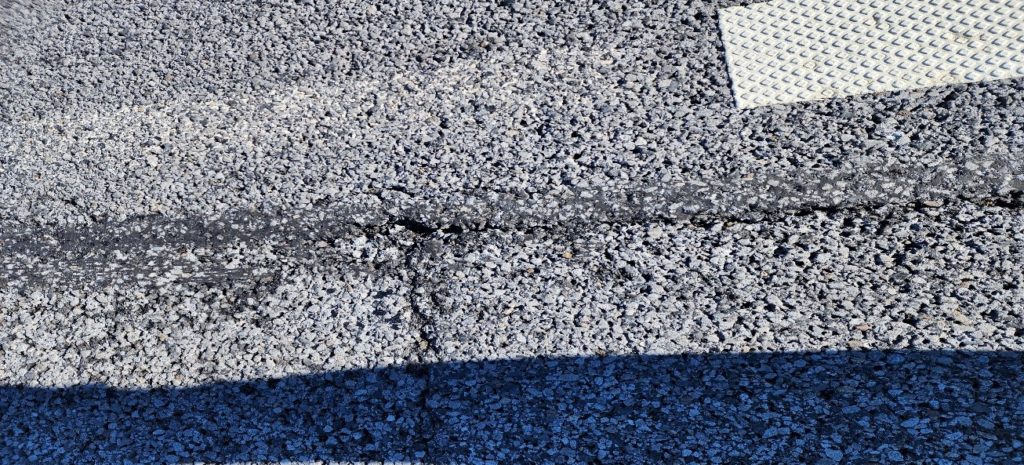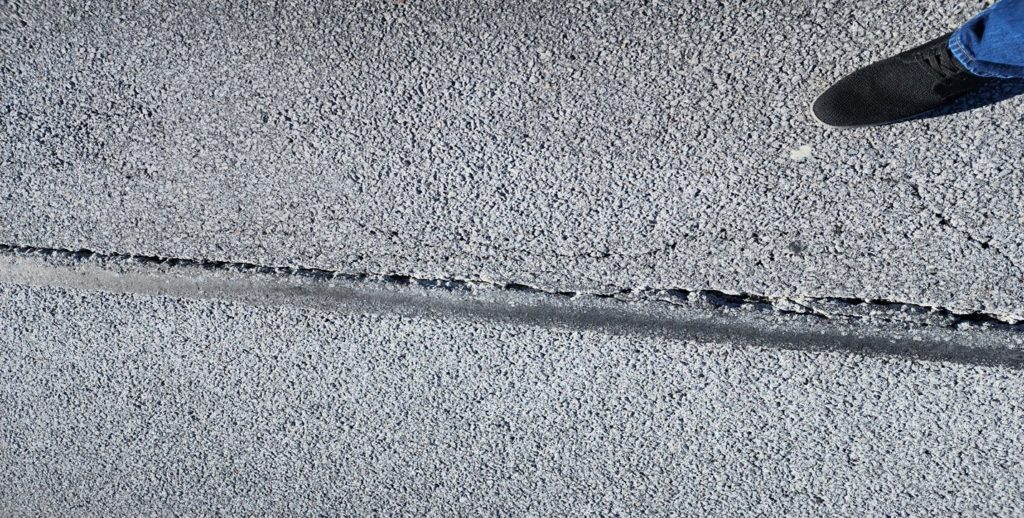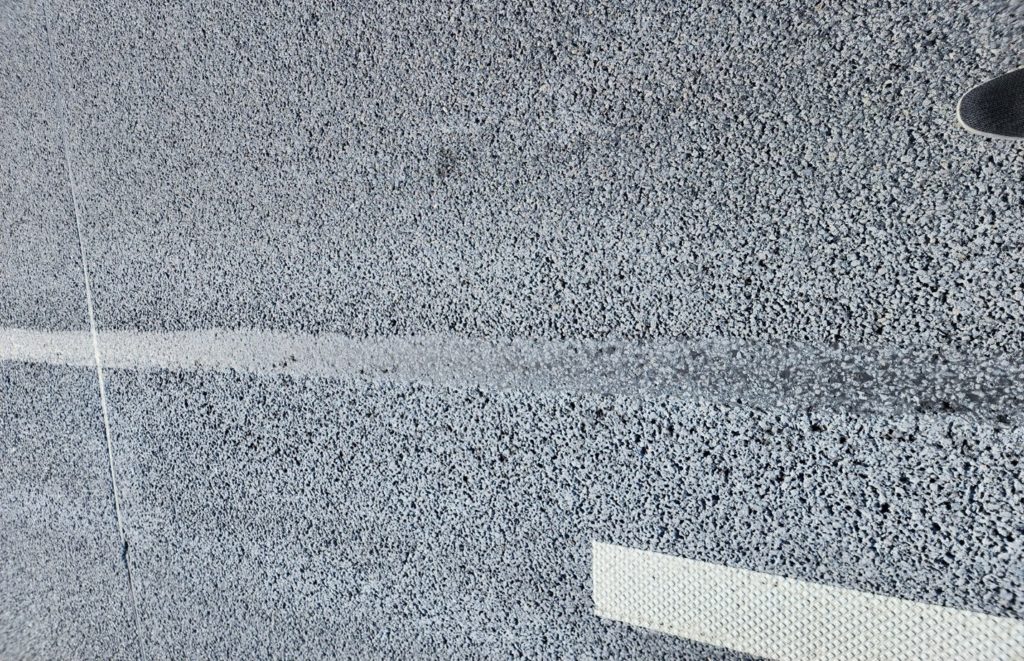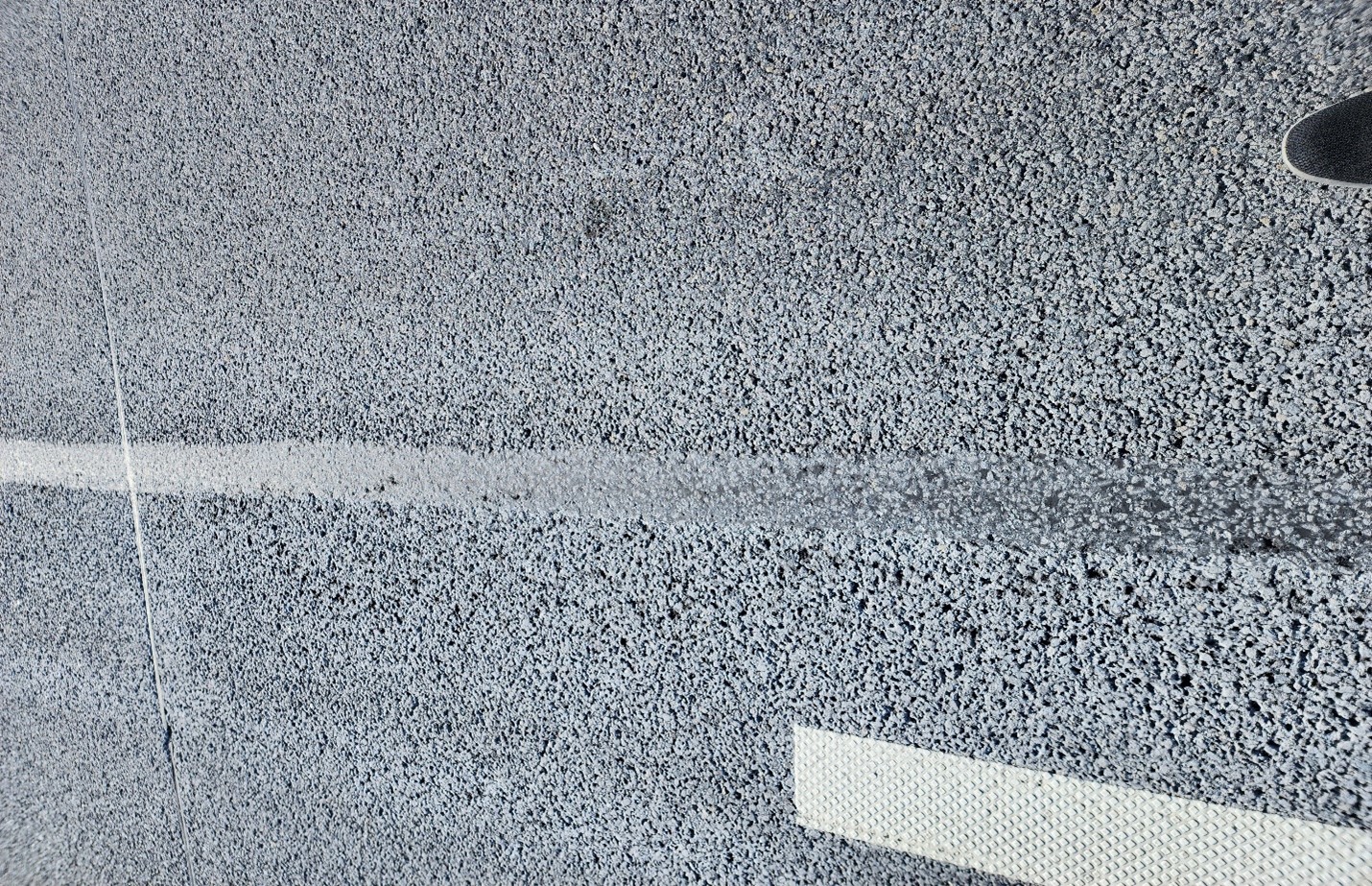Road managers know that the longitudinal joint is the first part of the pavement to fail. As a road’s most permeable part, this joint is susceptible to the elements. Air and water work down through this gap causing the joint to deteriorate, crack and pothole. And when the longitudinal joint fails, the rest of the road soon follows — triggering the need for even more maintenance.
By filling a substantial portion of the voids at the longitudinal joint with a Void Reducing Asphalt Membrane (VRAM), you are able to reduce permeability in this most critical area.
Project: I-380 in Monroe County, PA
VRAM is a proven technology that has been helping roads last longer since 2002. Once again the success of this technology is evidenced by this project in Pennsylvania. In October of 2018, PennDOT performed its 2nd Pilot Project using a VRAM product named J-Band®. The product was applied on a 1.1 mile section on I-380 in Monroe County, PA with 0.4 miles identified as control sections. Over a three-year span, an annual visual review was performed to analyze the condition of the longitudinal joints. Each year, control and VRAM sections were reviewed by representatives from PennDOT’s central office, PennDOT’s District 5, and Associated Asphalt, the materials producer.
I-380 Project Findings
In December of 2021, cores were tested by Rutgers University Center for Advanced Infrastructure and Transportation. The lab data indicated that the VRAM sections were virtually impermeable versus the control, and a crack test proved that VRAM was almost 4x better resistant to cracking.
“In just 4 years, J-Band has already proven that it outperforms other,
Dave Powers, Associated Asphalt
traditional longitudinal joint construction methods.”
In mid-December 2022, a visual review was conducted on the I-380 pilot project. After a total of 4 years, the section with VRAM showed no visual cracking along the longitudinal joint. The control sections revealed severe cracking and failure along the joint –requiring definite maintenance and repairs in the spring of 2023. This project once again showcases the benefit of VRAM as a proactive construction process to prevent the early failure of longitudinal joints.


This was PennDOT’s second pilot project using J-Band® with construction starting in October of 2018. Because of the use of J-Band®, the test section of the pavement’s longitudinal joint has been protected. J-Band is unlike other methods, in that it is a materials approach and is applied prior to paving under the eventual location of the longitudinal joint. Because J-Band is a highly viscous VRAM, it is able to help preserve pavements and longitudinal joints from premature failure. J-Band helps keep air and water from penetrating deeper into treated pavements, protecting vulnerable areas of the road.

VRAM. When It’s Down, It’s Done!

As the previous photos demonstrate, when you place VRAM under the hot mix asphalt at time of construction, you are protecting your investment for years to come. It’s down. It’s done! You can focus your efforts and funding on the next set of new construction projects without having to worry about repeated repair and maintenance events along the longitudinal joint. J-Band helps save, time, money and lives . . . sustainably.
Utilizing lifecycle cost calculators and analysis (LCCA), it shows an investment in VRAM protects the longitudinal joint, helps roads last up to 5 years longer, and delivers a return on investment of 3 to 5 times its cost.
Date Constructed: 10-17-2018
Date Reviewed: 12-13-2022
This project was reviewed by:
David Powers, Performance Products Manager at Associated Asphalt
How You Can Invest in VRAM
A road is more resilient when less maintenance is required. VRAM is a proven technology and a wise financial investment. Since 2002, VRAM has been proven to be a wise investment in making roads safer and more sustainable. And when roads last longer, infrastructure funds go further.
Wise infrastructure investments will also enhance tax-payer confidence that their money is being spent with their best interests in mind. We believe that these types of projects will motivate project teams to collaborate to achieve better outcomes. The test and control sections should provide an objective measure of sustainable performance, which will draw attention to the good work being undertaken.
J-Band® is a product of Asphalt Materials, Inc. and was created in the labs of Heritage Research Group. To learn more about J-Band, or to connect with our team, you can connect via email at: Marketing@Asphalt-Materials.com.
Editor’s Notes: VRAM, Void Reducing Asphalt Membrane is referred to in Illinois as LJS, Longitudinal Joint Sealant.
Depending on the situation VRAM can be sprayed at different widths. For centerline applications, 18” is a typical application width.
J-Band®, CCAP® and T-Bond® are registered trademarks of Asphalt Materials, Inc. AMIBIND™, AMIBOND™, AMICYCLE™, AMIGUARD™, AMISEAL™ are trademarks of Asphalt Materials, Inc.

